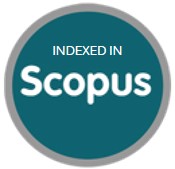Caracterización de condiciones de flexibilidad muscular y su relación con alteraciones posturales lumbopélvicas
DOI:
https://doi.org/10.21830/19006586.240Palabras clave:
flexibilidad muscular, alteraciones posturales lumbares, problemas posturales, postura, postura lumbarResumen
La flexibilidad muscular es una propiedad importante para lograr un balance biomecánico que permita un desempeño más adecuado del movimiento. Esto no solo resulta importante para mejorar las condiciones del trabajo músculo-esquelético, sino también la estabilidad articular y las propiedades morfológicas y de alineación postural, predominantemente en la región lumbo-pélvica, con lo cual el estado de la flexibilidad muscular es un factor relevante para evitar alteraciones funcionales y estructurales en la biomecánica lumbo-pélvica, que puedan ocasionar la aparición de patologías que limitan el desempeño deportivo del individuo, con incapacidades significativas y permanentes, además de incurrirse en riesgos económicos por incapacidad laboral.Descargas
Referencias bibliográficas
Aryana, M.; Li, Z. & Bommer, W. J. (2012). Obesity and physical fitness in California school children. Am. Hearth J. 163(2), 302-312.
https://doi.org/10.1016/j.ahj.2011.10.020
PMid:22305851
Capodaglio, P.; Castelnuovo, G.; Brunani, A.; Vismara, L., et al. (2010). Functional limitations and occupational issues in obesity: a review. Int. J. Occup. Saf. Ergon. 16(4), 507-523.
https://doi.org/10.1080/10803548.2010.11076863
PMid:21144269
Carrel, A. L.; Clark, R. R.; Peterson, S. E.; Nemeth, B. A., et al. (2005). Improvement of fitness, body composition and insulin sensitivity in overweight children in a school-based exercise program: a randomized, controlled study. Arch. Pediatr. Adolesc. Med. 159(10), 963-968.
https://doi.org/10.1001/archpedi.159.10.963
PMid:16203942
Ebenbichler, G. R.; Oddsson, L. I.; Kollmitzer, J. & Erim, Z. (2001). Sensory-motor control of the lower back: implications for rehabilitation. Med. Sci. Sports Exerc. 33(11), 1889-1898.
https://doi.org/10.1097/00005768-200111000-00014
PMid:11689740
Evcik, D. & Yucel, A. (2003). Lumbar lordosis in acute and chronic low back pain patients. Rheumatol. Int. 23(4), 163-165.
https://doi.org/10.1007/s00296-002-0268-x
PMid:12856140
Gatti, R.; Faccendini, S.; Tettamanti, A. & Barbero, M., et al. (2011). Efficacy of trunk balance exercises for individuals with chronic low back pain: a randomized clinical trial. J. Orthop. Sports Phys. Ther. 41(8), 542-552.
https://doi.org/10.2519/jospt.2011.3413
PMid:21654092
Gremion, G. (2005). Is stretching for sports performance still useful? A review of the literature. Rev. Med. Suisse 1(28), 1830-1834.
PMid:16130528
Hernández, B. & Velasco, E. (2000). Encuestas transversals. Rev. Salud Pública Mex, 42 (5), 447-455.
https://doi.org/10.1590/S0036-36342000000500011
PMid:11125630
Hernández, M.; Garrido, F. & López, S. (2000). Dise-o de Estudios epidemiológicos. Rev. Salud Pública Mex. 42(2), 144-154.
https://doi.org/10.1590/S0036-36342000000200010
Hilgenkamp, T. I.; van Wijck, R. & Evenhuis, H. M. (2010). Physicalfitness in older people with IDConcept and measuring instruments: a review. Res. In Dev. Dis. 31(5), 1027-1038.
https://doi.org/10.1016/j.ridd.2010.04.012
PMid:20488658
Hodges, P. W. (2000). The role of the motor system in spinal pain: implications for rehabilitation of the athlete following lower back pain. J. Sci. Med. Sport 3(3), 243-253.
https://doi.org/10.1016/S1440-2440(00)80033-X
Hrysomallis, C. (2010). Effectiveness of strengthening and stretching exercises for the postural correction of abducted scapule: a review. J. Strength Cond. Res. 24(2), 567-574.
https://doi.org/10.1519/JSC.0b013e3181c069d8
PMid:20072041
Ingraham, S. J. (2003). The role of flexibility in injury prevention and athletic performance: have we stretched the truth? Minn. Med. 86(5), 58-61.
PMid:15495679
Janssen, M. M.; Drevelle, X.; Humbert, L.; Skalli, W., et al. (2009). Differences in male and female spino-pelvic alignment in asymptomatic young adults: a three-dimensional analysis using upright low-dose digital biplanar X-rays. Spine 34(23), 826-832.
https://doi.org/10.1097/BRS.0b013e3181a9fd85
PMid:19927088
Jenkins, J. & Beazell, J. (2010). Flexibility for runners. Clin. Sports Med. Volumen 29(3), 365-377.
https://doi.org/10.1016/j.csm.2010.03.004
PMid:20610027
Kennedy, D. J. & Noh, M. Y. (2011). The role of core stabilization in lumbosacral radiculopathy. Phys. Med. Rehabil. Clin. N. Am. 22(1), 91-103.
https://doi.org/10.1016/j.pmr.2010.12.002
PMid:21292147
Keogh, J. W.; Kilding, A.; Pidgeon, P.; Ashley, L. & Gillis, D. (2009). Physical benefits of dancing for healthy older adults. A review. J. Aging Phys. Act. 17(4), 479-500.
https://doi.org/10.1123/japa.17.4.479
Koumantakis, G.A.; Watson, P. J. & Oldham, J. A. (2005). Trunk muscle stabilization training plus general exercise versus general exercise only: randomized controlled trial of patients with recurrent low back pain. Phys. Ther. 85(3), 209-225.
PMid:15733046
Krabak B, Kennedy DJ (2008) Functional rehabilitation of lumbar spine injuries in the athlete. Sports Med. Arthrosc. 16(1), 47-54.
https://doi.org/10.1097/JSA.0b013e318164c431
PMid:18277262
Lang-Tapia, M.; Espa-a-Romero, V.; Anelo, J. & Castillo, M. J. (2011). Differences on spinal curvature in standing position by gender, age and weight status using a noninvasive method. J. Appl. Biomech. 27(2), 143-150.
https://doi.org/10.1123/jab.27.2.143
PMid:21576723
Miyakoshi, N. (2008). Therapeutic exercise. Clin. Calcium 18(11), 1611-1615.
PMid:18974450
Moller, A. & Masharawi, Y. (2011). The effect of first ballet classes in the community on various postural parameters in young girls. Phys. Ther. Sport 12(4), 188-193.
https://doi.org/10.1016/j.ptsp.2011.04.001
PMid:22085713
Nakipoglu, G. F.; Karagoz, A. & Ozgirgin, N. (2008). The biomechanics of the lumbosacral region in acute and chronic low back patients. Pain Physician 11(4), 505-511.
PMid:18690279
Renkawitz, T.; Boluki, D. & Grifka, J. (2006). The association of low back pain, neuromuscular imbalance, and trunk extension strength in athletes. Spine J. 6(6), 673-683.
https://doi.org/10.1016/j.spinee.2006.03.012
PMid:17088198
Saner, J.; Kool, J.; de Bie, R. A.; Sieben, J. M. & Luomajoki, H. (2011). Movement control exercise versus general exercise to reduce disability in patients with low back pain and movement control impairment. A randomised controlled trial. BMC Musculoskelet Disord. 23(1), 207.
https://doi.org/10.1186/1471-2474-12-207
PMid:21943318 PMCid:PMC3189916
Schwab, F.; Lafage, V.; Patel, A. & Farcy, J. P. (2009). Sagittal plane considerations and the pelvis in adult patient. Spine 34(17), 1828-1833.
https://doi.org/10.1097/BRS.0b013e3181a13c08
PMid:19644334
Siddigui, N. I.; Nessa, A. &Hossain, M. A. (2010). Regular physical exercise: way to healthy life Mymensingh. Med. J. 19(1), 154-158.
Specht, D. L.; De Boeker, K. F. (1991). Anatomical length inequality, scoliosis and lordotic curve in unselected clinic patients. J. Manipulative Physiol. Ther. 14(6), 368-375.
PMid:1919374
Stojanovic MD, Ostojic SM (2011) Stretching and injury prevention in football: current perspectives. Res. Sport Med. 19(2), 73-91.
https://doi.org/10.1080/15438627.2011.556476
PMid:21480055
Witvrouw, E.; Mahieu, N.; Danneels, L. & McNair, P. (2004). Stretching and injury prevention: an obscure relationship. Sports Med. 34(7), 443-449.
https://doi.org/10.2165/00007256-200434070-00003
PMid:15233597
Descargas
Publicado
Cómo citar
Número
Sección

| Estadísticas de artículo | |
|---|---|
| Vistas de resúmenes | |
| Vistas de PDF | |
| Descargas de PDF | |
| Vistas de HTML | |
| Otras vistas | |
























